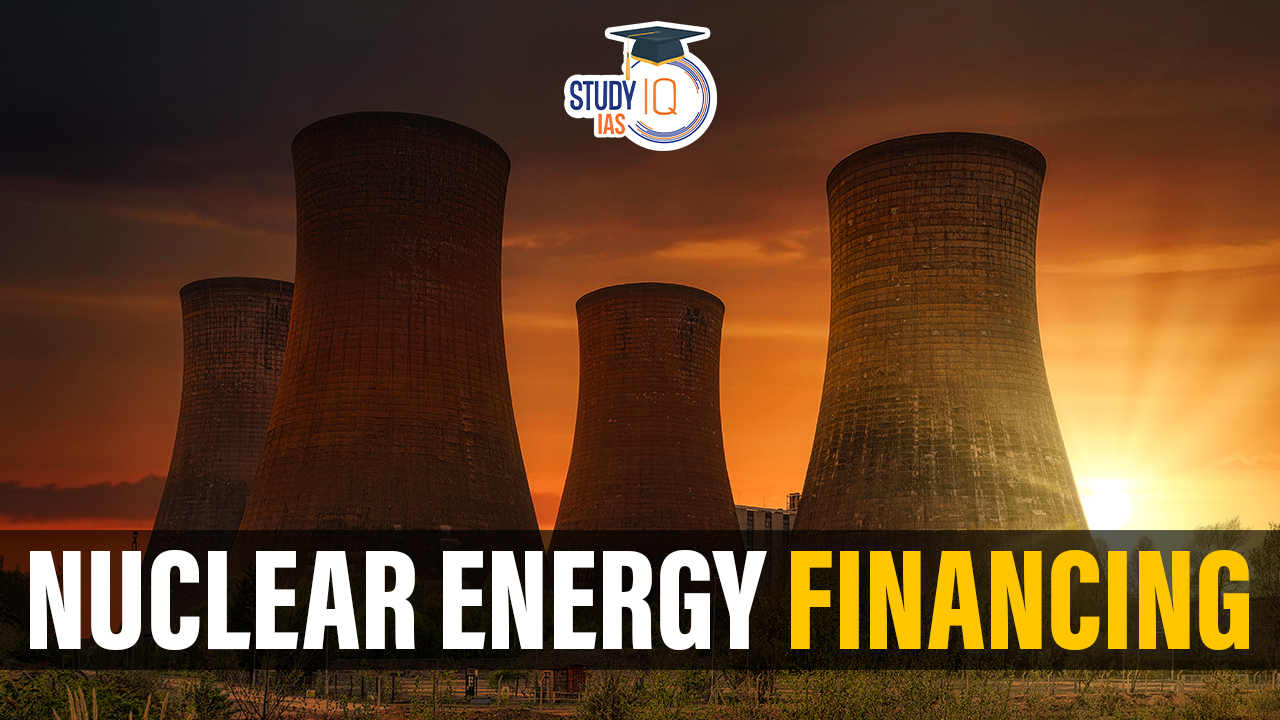Table of Contents
Context: Brussels hosted the first-ever Nuclear Energy Summit highlighting nuclear energy’s role in combating climate change.
Overview of the Nuclear Energy Summit
| Overview of the Nuclear Energy Summit | |
| Event | First-ever Nuclear Energy Summit |
| Date | March 21, 2024 |
| Location | Brussels |
| Co-chairs | Prime Minister of Belgium Alexander De Croo, IAEA Director General Rafael Mariano Grossi |
| Participants | Several world leaders |
Motivation from COP28
- Event: UN Climate Change Conference (COP28) in Dubai, December 2023.
- Outcome: Recognition of nuclear energy’s essential role in achieving climate goals.
- Global Initiative: 22 world leaders signed a declaration to triple nuclear energy capacity by 2050.
- IAEA’s Role: Collaboration with IAEA’s ‘Atoms4Netzero’ programme for decarbonization.
Advantages of Nuclear Energy
- Low carbon emissions – 4 times less than solar or wind.
- Reliable and uninterrupted energy supply – not dependent on weather.
- Low operating costs compared to other renewables.
- Smaller land footprint than other renewables.
- Longer lifespan than other renewables.
Challenges of Nuclear Energy Financing
- Limited funding from Multilateral Development Banks (MDBs) and private investors.
- The World Bank hasn’t financed a nuclear project since 1959.
- Need to reform MDB financing policies to include private capital or blended finance models.
Successful Financing Models
- Cooperative funding models used in France, South Korea, Russia, and the UK.
- Investors raise credit and take responsibility for project delivery.
- Finland’s Mankala model: multiple companies co-own energy producers, and share plant costs.
- Financial creativity and market support are needed to unlock nuclear energy’s potential.
Global Status of Nuclear Energy
- 440 nuclear reactors worldwide, generating 25% of the world’s low-carbon energy.
- 60 reactors under construction, 110 planned (mostly in Asia, led by China).
- China targets 10% of its electricity from nuclear by 2035, and 18% by 2060.
- Challenges: Project cost overruns, and bankruptcies (e.g., NuScale, Westinghouse, Areva).
India’s Nuclear Energy Scenario
- Energy Cost: India’s first commercial NPP in Pahalgarh, Tarapur offers energy at competitive rates compared to solar power.
- At Kudankulam, Tamil Nadu, a newer power plant provides electricity at costs similar to coal-fired thermal power plants.
- Low nuclear energy contribution: 1.6% of India’s renewable energy mix.
- Reasons for low adoption: stigma, safety concerns, regulation, high upfront costs, delays.
- Recent developments:
- Encouragement of private investment ($26 billion)
- Plans to triple nuclear capacity by 2031-2032
- Prime Minister Modi’s support for Prototype Fast Breeder Reactor (PFBR)


 Operation Baam: Baloch Separatist Group ...
Operation Baam: Baloch Separatist Group ...
 National Register of Indian Citizens (NR...
National Register of Indian Citizens (NR...
 World Population Day 2025, Themes, Histo...
World Population Day 2025, Themes, Histo...





















